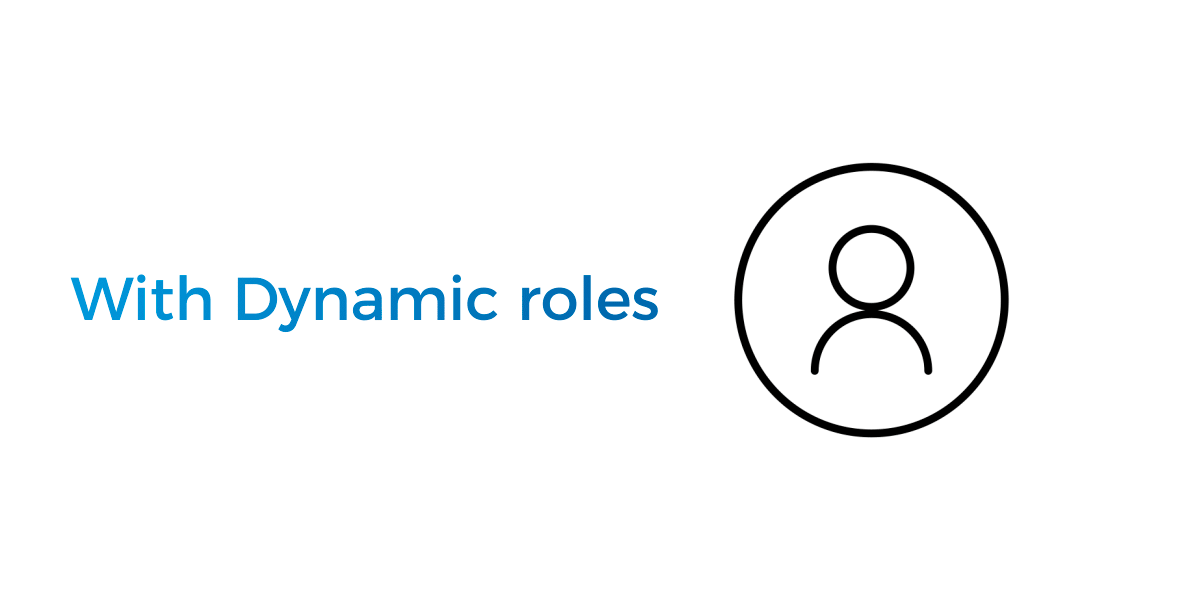
Dynamic Roles
The feature that makes your business environment more flexible and addressing your essential needs.
The dynamic roles feature will help organize your team or clients structure while maintaining a safe and secure place to work, share and access encrypted data.
The whole dashboard interface functions enable you to customize and enhance user experience based on user type, positions or roles.
Create as many roles as you like, name them, give various permissions (e.g. download files, upload files, access to functions, etc.). Once your customized roles are applied to users, they will be able to work, access or modify only the things they need to and nothing more. So the risk of data leakage is minimized and sensitive information is protected.
Dynamic roles core functions:
- Role creation – create, duplicate, modify, give a name and color to the ‘dynamic role’ labels. Customize roles by giving access to dashboard features.
- Positions – create a list of the team positions to organize, sort your team. Sharing files to a group of users with more efficiency.
- Assigning roles – Roles can be assigned to users and folders as separate or in combination with other roles.
To start with, you will have “Super Admin”, ”User” and “Guest” predefined roles that cannot be modified or deleted from the roles list. At Least one user must have a “Super Admin” role. It consists of all possible permissions, so is the most powerful to perform the tasks. We suggest to use this role wisely and with precautions.
NOTE: “Super Admin” role is assigned by default to the owner of a group, i.e. user who registered the group. Unassigning the “Super Admin” role from this user will prompt to select another group owner.
Creating roles:
Roles management is placed in Settings -> Roles.
| Role example: |
Here you will find a list of existing roles with options to duplicate, edit and delete. Additional information shows how many users are assigned to the specific roles as well as a user list for fast management to add or remove roles.
Start by creating a new role (or duplicating existing one), giving a preferred title and color. Next, add the actions to the role. The Action list contains a total of 48 options. Feel free to customize the roles upon your preferences. Remember that multiple roles can be assigned to users and folders.
Creating positions:
Position labels will help to organize users, sort by groups and share data to groups at once.
Create positions in Settings -> Roles / Positions.
| Position example: |
Here you can create a list of roles by giving a name and color as well as manage previously created roles. Edit, duplicate, delete or manage the users lists with the assigned roles.
Roles and Positions Character length
Users with permissions to set up ‘Roles’ and ‘Positions’ labels can give a name of 2-10 characters long combined of any (a-z) letters, (0-9) numbers, special characters ( .) dot and ( ) space.
Assigning roles and positions:
Roles assigned to users and folders will limit feature and function access. For example, a user with a “Guest” role will have access only to the Public Files and Personal Files, ability to upload and download data, but no option to access timestamps, share files or view a team list. Vice versa, users with a “Super Admin” role will have access to all possible features in the Geens cloud.
NOTE: Multiple roles can be assigned to users and folders. For example: one user will have assigned roles – Manager, Administrator and Team manager. In this case, all roles actions and permissions will be combined into one.
- Assigning roles and position to users
In the Team Menu, all team users can be displayed as cards or in a list view. Users’ Name Surname, geens#id, position, roles and some extra data are visible immediately and can be sorted accordingly. If editing users, the options window will pop up where you can modify roles by removing or adding new roles from your roles list.
- Assigning roles to files and folders
Typically data in Company Files Menu is public and can be accessed by all team members. Now it is possible to customize data access by applying role labels to folders. In the attributes window, while desirable folders are selected, multiple roles from a role list can be applied. Folders with roles will be visible and accessible only by users that have the same roles applied to them.
For example, there are three folders in Company files and one of the folders has an “Admin” role assigned. The rest of a team will see only two folders and users with “Admin” roles will see three folders.
Feel free to experiment and customize your user experience to find the right formula for your use-cases and stay protected with the end-to-end encrypted cloud. Keeping your data safe and private is our aim. We will continue developing and pioneering new features and functions to serve our users.
